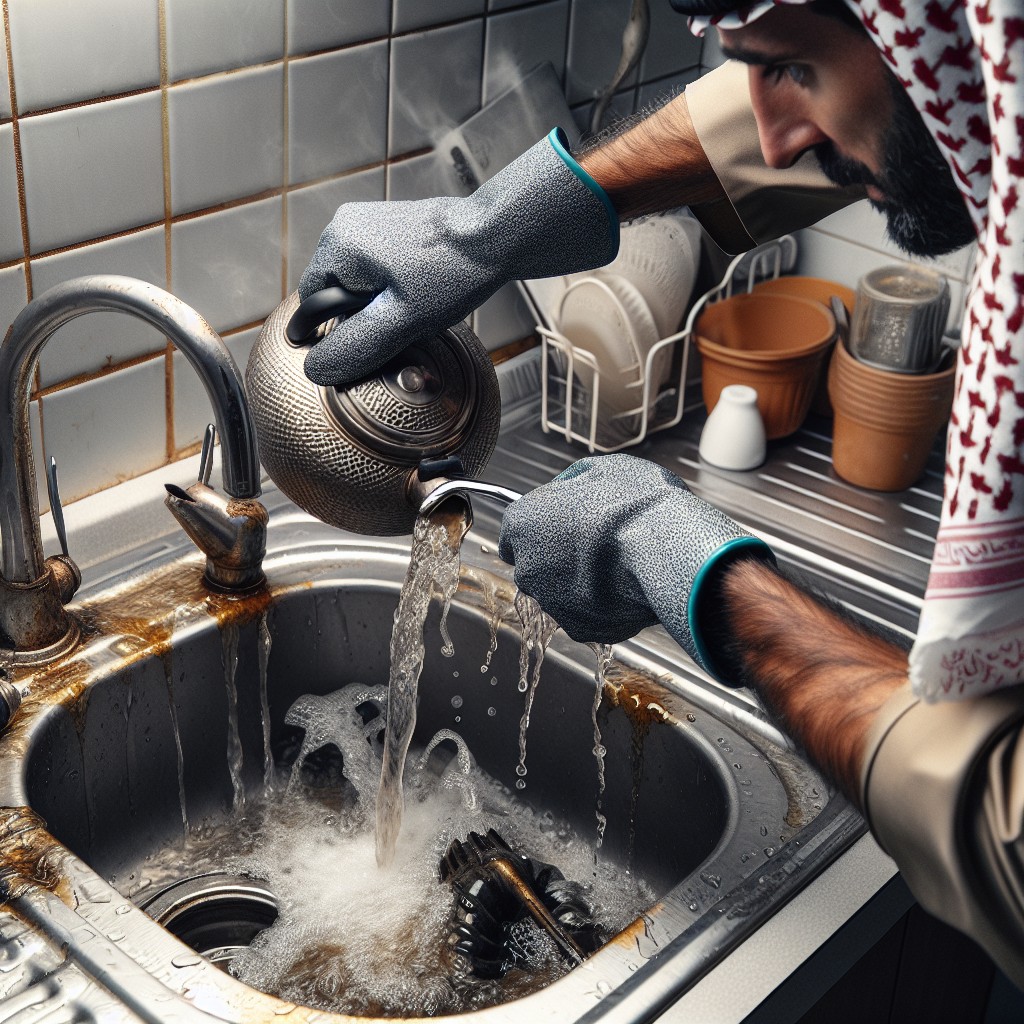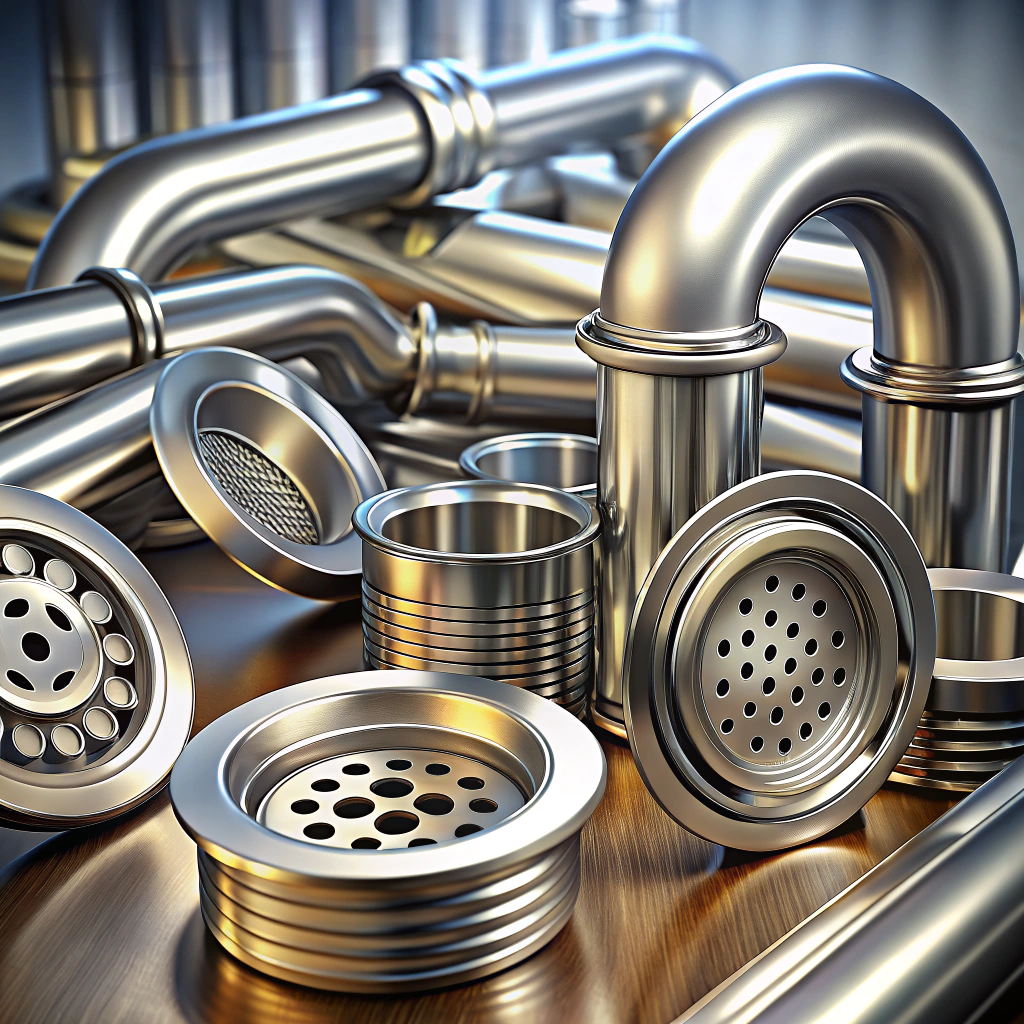Last updated on
Dive straight into learning how to unclog a sink with this comprehensive, step-by-step guide that transforms even the least handy individual into a competent DIY plumber.
Key takeaways:
- Boiling water melts away greasy build-up in the pipes
- Check garbage disposal before resorting to harsh chemicals
- Use a plunger designed for sinks to dislodge clogs
- Plumber’s snake can tackle deeper clogs that other methods can’t handle
- Prevent future clogs by regular maintenance and mindful habits
What's Inside
Attack With Boiling Water

Ease into the process by pouring a pot of boiling water directly down the drain. The intense heat works wonders, often melting away greasy build-up that clings to the pipes. This method is particularly effective on kitchen sink clogs, where oils and fats from cooking solidify over time. Ensure the water is at a rolling boil to maximize impact—lukewarm water won’t have the same effect. As an added bonus, this process is environmentally friendly and won’t harm your plumbing. However, do exercise caution with porcelain sinks to avoid cracking due to the sudden temperature change.
For truly stubborn blockages, you may need to follow up with a concoction of baking soda and vinegar after the boiling water treatment. Pour half a cup of baking soda down the sink, followed by half a cup of white vinegar. These household staples create a fizzy chemical reaction that can dislodge minor sink clogs. Cover the drain with a plug and let the mixture work its magic for about an hour before flushing with more boiling water.
Check the Garbage Disposal
Before reaching for harsh chemicals or calling a plumber, consider that a common culprit for sink blockages is a clogged garbage disposal. If the disposal is jammed, it can hinder water flow, causing the sink to back up. Here’s how to address it:
1. Safety First: Always ensure the disposal unit is turned off to prevent accidents. It’s a good idea to unplug it from the power source, too.
2. Reset the Disposal: Look for a small red button on the bottom of the unit — that’s the reset button. Press it. If it has tripped, this can get your disposal running again.
3. Manual Rotation: If the reset doesn’t work, use an Allen wrench in the center shaft at the bottom of the disposal. Gently turn it back and forth — this can dislodge what’s causing the jam.
4. Check for Obstructions: With the power still off, use tongs (never your hands) to remove any non-disposable items that might have fallen in.
5. Run Water and Test: Once clear, run cold water and turn the disposal on to see if the sink drains properly.
Remember, regular maintenance like cleaning your disposal with ice cubes or citrus peels can prevent blockages and keep everything running smoothly.
Plunge Away the Blockage
Before plunging, ensure the sink contains enough water to submerge the bell of the plunger, creating a seal that amplifies the pressure. Opt for a cup plunger, designed specifically for sink blockages, rather than a flange plunger used for toilets.
For double sinks, cover the second drain with a wet cloth to focus the force downward. Angle the plunger over the clogged drain and use a firm, consistent pumping motion for about 20 seconds. The pressure can displace the clog, and often you’ll feel the clog release and water will begin to drain. It may require several attempts, but perseverance often pays off.
Remain patient throughout the process, as effective plunging can take time. If water begins to drain, run hot water to clear any remaining debris. If the blockage persists, it may be time to escalate to other methods.
Try the Plumber’s Snake
Equipped with your trusty plumber’s snake, also known as a drain auger, you’re ready to tackle deeper clogs that boiling water, garbage disposals, and plungers can’t handle.
Insert the snake into the drain, turning the handle clockwise. This action sends the coiled spiral tip down into the pipe.
As you push further, you’ll feel resistance when you hit the clog. Continue turning the handle, which allows the tip to latch onto the debris.
With a steady hand, pull the snake out, bringing the clog with it.
It’s a bit of an art – too forceful, and you might push the clog further; too gentle, and you won’t grab it at all. But with patience and a bit of muscle, that once-impenetrable blockage will often break free and your sink will thank you with the sweet sound of a free-flowing drain.
How to Prevent Future Clogs
Maintaining a clog-free sink is simpler than it seems; it’s mainly about mindful maintenance and avoiding habits that sabotage your drainage.
Regularly flush your sink with hot water to dissolve and displace buildup.
Incorporate baking soda and vinegar into your cleaning routine – the duo acts like a gentle, natural scrub for your pipes.
Stay vigilant against the common culprits: cooking oil, coffee grounds, and food scraps belong in the compost or trash, not down the sink.
Install a mesh drain strainer to catch debris, and clean it out regularly.
And don’t underestimate the power of professional cleaning – an annual check-up can keep your sink in top shape.
Remember, prevention is more straightforward and less costly than the cure.




